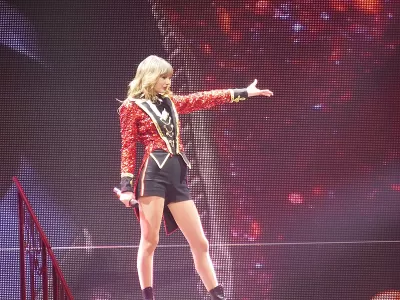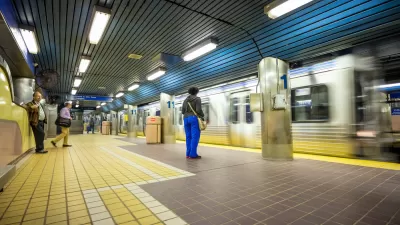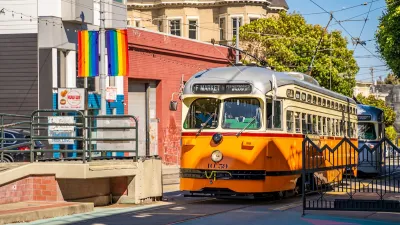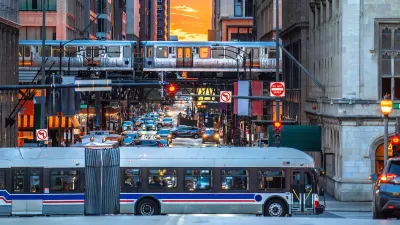Taylor Swift fans are flocking to public transit to attend her concerts, breaking ridership records in cities around the country. Will they keep using transit after the show?

Struggling transit agencies around the country are getting a much-needed boost—if Taylor Swift happens to be playing in their city, that is.
As Jared Brey reports in Governing, Atlanta’s Metropolitan Atlanta Rapid Transit Authority (MARTA) saw triple its normal ridership at the stations surrounding Swift’s concert venue on the weekend she performed. “When Swift played Philadelphia in May, SEPTA, the city's transit system, added late-night trains in its regional rail network, and counted a combined 27,000 fans entering the subway station next to Lincoln Financial Field in the hour after the shows ended.” In Boston, the city sold out of transit tickets for the night of Swift’s show before adding more capacity.
The ridership boost is useful, but do one-off events do anything to improve transit ridership long-term? “What would convert a special-occasion rider into a regular one?” For SEPTA spokesman Andrew Busch, the answer is “a great experience” that includes “everything from frequency, reliability and navigability to cleanliness, good lighting and security presence.”
To accommodate post-pandemic trends, agencies are now looking to increase frequency and service during off-peak travel hours and adapt to provide temporary boosts in service during major special events.
Ultimately, the Swiftie bump is a blip on the radar of transit ridership, but it could convert riders down the line. According to Matthew Dickens, director of policy development and research at the American Public Transportation Association, “big events are a chance to introduce new people to the transit system, and that research shows that people who first use transit when they're young are more likely to ride regularly when they're older.”
FULL STORY: Taylor Swift Fans Give Public Transit a Well-Timed Boost

Study: Maui’s Plan to Convert Vacation Rentals to Long-Term Housing Could Cause Nearly $1 Billion Economic Loss
The plan would reduce visitor accommodation by 25,% resulting in 1,900 jobs lost.

North Texas Transit Leaders Tout Benefits of TOD for Growing Region
At a summit focused on transit-oriented development, policymakers discussed how North Texas’ expanded light rail system can serve as a tool for economic growth.

Why Should We Subsidize Public Transportation?
Many public transit agencies face financial stress due to rising costs, declining fare revenue, and declining subsidies. Transit advocates must provide a strong business case for increasing public transit funding.

How to Make US Trains Faster
Changes to boarding platforms and a switch to electric trains could improve U.S. passenger rail service without the added cost of high-speed rail.

Columbia’s Revitalized ‘Loop’ Is a Hub for Local Entrepreneurs
A focus on small businesses is helping a commercial corridor in Columbia, Missouri thrive.

Invasive Insect Threatens Minnesota’s Ash Forests
The Emerald Ash Borer is a rapidly spreading invasive pest threatening Minnesota’s ash trees, and homeowners are encouraged to plant diverse replacement species, avoid moving ash firewood, and monitor for signs of infestation.
Urban Design for Planners 1: Software Tools
This six-course series explores essential urban design concepts using open source software and equips planners with the tools they need to participate fully in the urban design process.
Planning for Universal Design
Learn the tools for implementing Universal Design in planning regulations.
Ascent Environmental
Borough of Carlisle
Institute for Housing and Urban Development Studies (IHS)
City of Grandview
Harvard GSD Executive Education
Toledo-Lucas County Plan Commissions
Salt Lake City
NYU Wagner Graduate School of Public Service





























